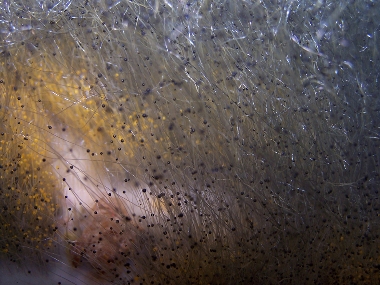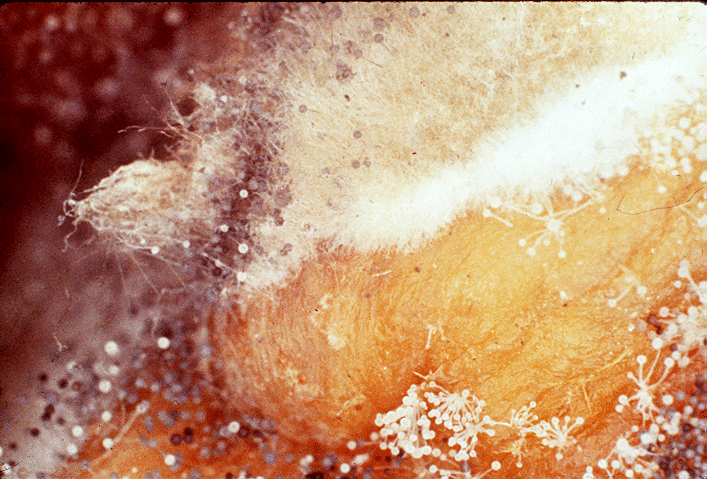Where does Rhizopus stolonifer prefer to live?
Due to the abundance and common presence of Rhizopus stolonifer spores in the air, the mold has the ability to quickly form on any surface in which it can obtain food. Rhizopus stolonifer is dependent on sugar and starch, which it acquires from food matter, such as breads and soft fruits. The food source that is used by this mold is utilized for growth, nutrition, and reproduction.
The spores that are produced through reproduction are commonly found in the air. Rapid growth occurs under temperatures of 15°C-30°C where the spores are able to germinate to their full potential. Also, in moist environments, such as bread, Rhizopus stolonifer can quickly spread within a few days.
Rhizopus stolonifer is considered to be saprophytic, or lives on dead organic matter. It is also considered to be parasitic due to the fact that it absorbs all nutrients from the substrate of which it is encountering and it gives nothing back. Ripe fruit is most susceptible to this mold because of the moist environment it has. The moisture allows the mold to spread at fast speeds. Although breads and fruits are common places to host this particular fungus, they are not the only places the mold can be found. Rhizopus stolonifer prefers warm and dry habitats, such as soils, fresh decaying litter, wild bird nests, and even children's sandboxes. As a decomposer in the soil, the fungus plays a significant role in the carbon cycle. Rhizopus stolonifer has had to adapt to the environment in order to gain the capabilities it possesses.
To learn about another fungus from MultipleOrganisms.net that can be found in the soil please view orange peel fungus. Also, if you would like to view other interesting parasites researched by students, you can go read about the beef tapeworm or learn about a marine parasite Anisakis simplex.
Please go on to adaptation to see how this mold is able to live in the particular environments it upholds.

